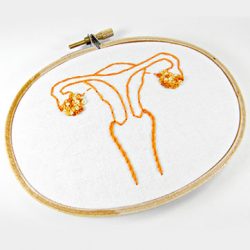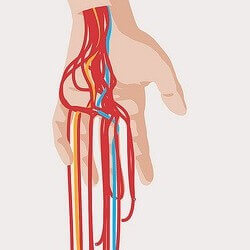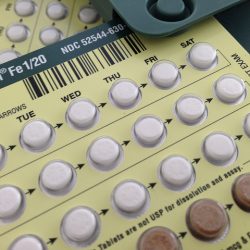Exogenesis: How Artificial Wombs Might Change Sex and Procreation
Will it lead to liberation, new options for the infertile, or an insurmountable class divide?

Read enough science fiction and you’re no doubt familiar with the trope that someday humanity will do a lion’s share of its reproduction by taking biology out of the equation and replacing it with technology.
Technically, this is called exogenesis: growing a fetus inside an artificial womb. As with so many previously fictional speculations, this concept becoming a common and accessible reality may not be that far off.
True, there are still some problems to overcome. But that hasn’t stopped quite a few people, including us here at Future of Sex, from doing some speculating on how exogenesis might affect human society and even how we might come to view physical pleasure as a whole.
What needs to happen

Before we get to that, though, it’s worth talking about what it will take to get real exogenesis from a wild idea to solid reality.
If the thought of exogenesis is still somewhat unsettling, rest assured that even though researchers have made some remarkable advances, including being able to partially develop a lamb in an artificial womb over a four-week period, we are still undoubtedly more than a few decades away from being able to do anywhere close to the same thing with a human.
A major part of why the research is taking so long is that, while much of human fetal growth and development is well understood, there remains a gap between understanding the process and recreating it artificially.
More than likely, something like full-blown exogenesis for human fetuses will arrive through a series of partial stages. It may first be used as a way to care for premature births, then developed into a new step after artificial insemination, before finally becoming a way for a human to be born without ever having been within a human body.
Full human exogenesis happening someday is pretty much a given, which is why it’s so important to start talking about what all it could mean.
Reproductive options
The most obvious result would be that exogenesis could give people who want to have a child more ways of doing it. For those who might find it challenging to carry a child to term, using an artificial womb could be a way to put less biological pressure on the mother.
In the same way, it might help people who would not otherwise be able to become pregnant, including same-sex couples or single individuals desiring a child: they could first use some form IVF to create a fetus and then use the artificial womb to grow it to maturity.
This also could mean that reproduction would be age-less, with babies able to be born to anyone, no matter how old they might be, without the need for a human being as a surrogate.
Sexual options

For all of human existence, sex and reproduction for heterosexual couples have been completely interconnected: one equaling the other by intent or, when birth control is not available or used, accident.
Artificial wombs, though, might mean this interconnectedness is only an option. Let’s say we’re now living in a world where this kind of technology is freely available at a cost equaling giving birth naturally. In this situation, young people might opt to have their sperm or eggs collected and stored and then undergo elective sterilization. When, or if, they want to have children all that would be needed is to put this material in an artificial womb and congrats, it’s a child.
In this way, we could have a culture in which, aside from the many other psychological hurdles as well as sexually transmitted infections (STI), sex could almost be trouble- and, most of all, repercussion-free.
This might even bring about a new sexual revolution, one even more free, liberated, and experimental than any that ever came before. In this world, pregnancy would always be a choice.
More than just technological problems
The thing is, a lot of this hypothetical scenario depends on artificial wombs being freely available for anyone who wants to use one.
An article for The Conversation raises a valid and troubling point: if exogenesis is cost-prohibitive for the average person, then this new technology could possibly result in an even more stratified class system, with only the wealthy being able to take advantage of all these new reproductive and sexual options.
Because of this, they recommend—and we heartily agree—that society needs to address this possible economic impact of the technology. Moreover, society must consider what it could mean for how we view reproduction, including the stigmas some might face being born this way.
Talking about it now

As with many other sex tech developments and breakthroughs—from robots to virtual reality—it’s important to fully consider the potential impact of widespread exogenesis use.
This is why, while there’s much to be excited about, especially when it comes to sex and reproduction no longer being inexorably and sometimes painfully linked, we need to keep our collective heads screwed on straight.
There needs to be a serious emphasis on that “fully consider,” as there could be an equal danger to either recklessly jumping into exogenesis use or blindly condemning it out of what might be completely unwarranted fear.
If we take proper care and play our collective cards right, we could very well someday be living in a world full of fantastic new reproductive options and a whole new outlook towards sexual pleasure.
Image sources: Instacodez, Mysudbury.ca Ouisudbury.ca, NHGRI, Gandalf’s Gallery, OXLAEY.com
Leave a reply
You must be logged in to post a comment.

















